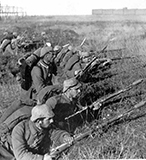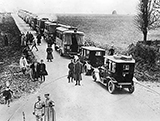After a quick, but ineffective offensive into Belgian and German territories, the French had withdrawn their forces by the end of August, 1914. Lack of artillery support and reconnaissance were just some of the problems that led to the failure of France’s Plan XVII.
In the early days of September, the French army continued to hold the line along its border with Germany. The towns of Verdun and Nancy were secure, forcing the majority of advancing German forces through Belgium.
French Commander Joffre ordered a retreat along the Belgian sector and instructed his army to hold the line at the Marne River. The Germans, led by Helmuth von Moltke, rapidly pursued the fleeing French Army. By September 2, 1914 the German forces had reached the outskirts of Paris. The French government had already fled to Bordeaux, leading to a sense of panic amongst Parisians.
Von Moltke was leading the battle from Luxembourg, but found his army’s pace too fast for supply lines and proper communication. General von Kluck, in a rush to take Paris, made the fateful decision to ignore his commander’s order to march west of Paris. Instead, he moved his First Army east, directly toward the French capital leaving his right flank exposed to attack.
By September 4, the French had learned of von Kluck’s blunder and decided to halt their retreat and prepare an attack. One way the French discovered the exposed flank was through a developing military technology known as aerial reconnaissance. The game changing information that was brought to French leaders via the airplane is believed to be the turning point for aerial warfare. From this time onward, the airplane would have an ever-growing part in the events of World War I and all future conflicts.
On September 5, the French launched their counteroffensive on the exposed German flank of von Kluck. The first few days of battle saw the French gain little over the Germans. In desperation and lacking modern (motor) mobility, the French army famously requisitioned Parisian buses and taxis to assist in moving French reserves to the front.
The French held their lines and, with the support of the British led by Sir John French, the Germans began to withdraw. Von Moltke had sent an intelligence officer to assess the condition of the struggling German advance. After meeting with General Karl von Bülow, the officer decided a German withdrawal was needed. Bülow began his retreat, leaving von Kluck (who was holding his ground) no choice but to follow.
As the Germans moved away from Paris, the “miracle of the Marne” elevated Commander Joffre to savior status amongst the French. Over the next few days, the French army pursued what they perceived as a defeated enemy, optimistically preparing to win the war in a crushing defeat of the German army.
Unbeknownst to the French, the Germans had retreated to the Aisne River and, as ordered, began entrenching themselves in defensive positions. This action would ultimately lead to the trench war that would come to define the Great War and lead to the stalemate that would result in so many costly decisions. The “miracle of the Marne” saved Paris, but it was nothing more than a prelude to the devastation that was to come.
-WD
Additional Photos
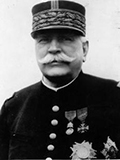 French Commander Joffre |
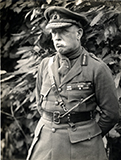 British General Sir John French |
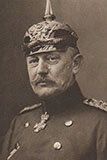 German Commander Von Moltke |
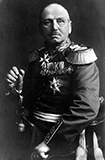 German General Von Kluck |
Related Lesson Plans
Further Reading
- Battle of the Frontiers
- BBC- The Battle of the Marne
- First World War.com: The Battle of the Marne
- Video- Taxis heading to the front
- The Schlieffen Plan
- BBC- The Schlieffen Plan
- First World War.com: War Plans
- Schlieffen Biography
- Modern Re-examination of the Schlieffen Plan
First Posted: 09/01/2014
